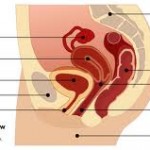
But according to the Mayo Clinic, its severity in people who suffer from the condition runs the gamut from occasional, minor dribbles of urine to frequently wetting clothes.
Fortunately, urinary incontinence is generally a treatable condition.
Available treatment include surgery, medication and physical therapy. But some treatments have proven problematic.
Vaginal mesh implants, marketed for treatment of urinary incontinence and pelvic organ prolapse, have prompted thousands of lawsuits due to their tendency to fail and cause health problems. The most common reported problem is the vaginal mesh eroding and sticking through the walls of the bladder and vagina, causing severe pain.
The Mayo Clinic lists the following specific types of urinary incontinence:
Stress incontinence: The “stress” in this case refers to pressure exerted on the bladder from coughing, sneezing, laughing, exercising or lifting something heavy. Stress incontinence occurs when the sphincter muscle of the bladder is weakened. In women, physical changes from pregnancy, childbirth and menopause can cause stress incontinence. In men, removal of the prostate gland can lead to stress incontinence.
Urge incontinence: This is a sudden, intense urge to urinate, followed by an involuntary loss of urine. The bladder muscle contracts and may give you a warning of only a few seconds to a minute to reach a toilet. Urge incontinence may cause a need to urinate often, including throughout the night. It may be caused by urinary tract infections, bladder irritants, bowel problems, Parkinson’s disease, Alzheimer’s disease, stroke, injury or nervous system damage associated with multiple sclerosis. If there’s no known cause, urge incontinence is also called overactive bladder.
Overflow incontinence: This type of incontinence stems from an inability to empty the bladder, and manifests itself in frequent or constant dribbling of urine. People with overflow incontinence may feel as if they never completely empty their bladder, and produce only a weak stream of urine when they attempt to urinate. It may occur in people with a damaged bladder, blocked urethra or nerve damage from diabetes, multiple sclerosis or spinal cord injury. In men, overflow incontinence can also be associated with prostate gland problems.
Mixed incontinence: If you experience symptoms of more than one type of urinary incontinence, such as stress incontinence and urge incontinence, you have mixed incontinence.
Functional incontinence: Many older adults, especially people in nursing homes, experience incontinence simply because a physical or mental impairment keeps them from making it to the toilet in time. For example, a person with severe arthritis may not be able to unbutton his or her pants quickly enough. This is called functional incontinence.
Total incontinence: This term is sometimes used to describe continuous leaking of urine, day and night, or the periodic uncontrollable leaking of large volumes of urine.
If you have a vaginal mesh implant, you should consult with a doctor if you have any ongoing symptoms or health concerns. If you have significant injuries, you should also consult with a mesh lawyer to discuss your legal rights.
Get more information on urinary incontinence here:
https://www.mayoclinic.com/health/urinary-incontinence/DS00404
